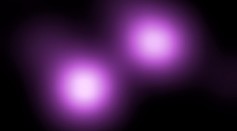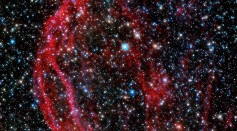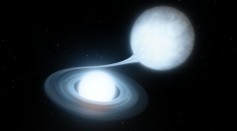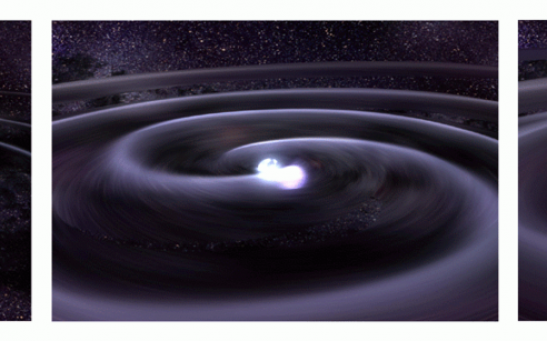Supernova

Here's How Scientists Depend on Isolated Stars to Examine Weak Supernova Explosions

Origins of Heavy Metals: Researchers Use Computer Simulations to Determine Where Gold Comes From

Supernova Remnant: Red Ribbon Explosion of a Dead White Dwarf Inside the Large Magellanic Cloud Captured by Hubble Space Telescope
NASA Hubble Space Telescope Groggily Shares Photo of Cosmic Gas Ribbon

Stars of Galaxy Charted 12 Billion Light-Years Away Contains Same Element Inside Human Bones, Toothpaste
Hubble Space Telescope Detects Two Interacting Galaxies Million Light-Years Away
Researchers Successfully Recreates Supernova Reaction In a Lab Using an Accelerated Beam of Radioactive Nuclei
NASA Hubble Space Telescope Witnesses Death of a Star
Chinese Supernova Seen 900 Years Ago Finally Solved! How Did it Go?
Light From Exploding Supernova Requiem Will Be Seen Again in 2037, Astronomers Say

Scientists Discover a Black Hole Causing Rare Supernova
Star Factories Are Major Polluters of the Universe, Study Showed
Supernova Blast Captured: Kepler Space Telescope Reveals the Groundbreaking Data It Recorded 3 Years Ago
Protons, Electrons Comprise Gamma Ray; Origin Identified for the First Time, Quantified in Cluster of Supernova Remnant
Most Popular

Innovative BLAST Patch Could Stop Skin Infections with Harmless Electric Currents

Cold, Not Heat, Caused Mass Extinction 201.6 Million Years Ago: New Study

The Pompa Program: A New Model in Thyroid Wellness

Why It's So Difficult to Lose Weight: The Biological Explanation Behind Obesity






